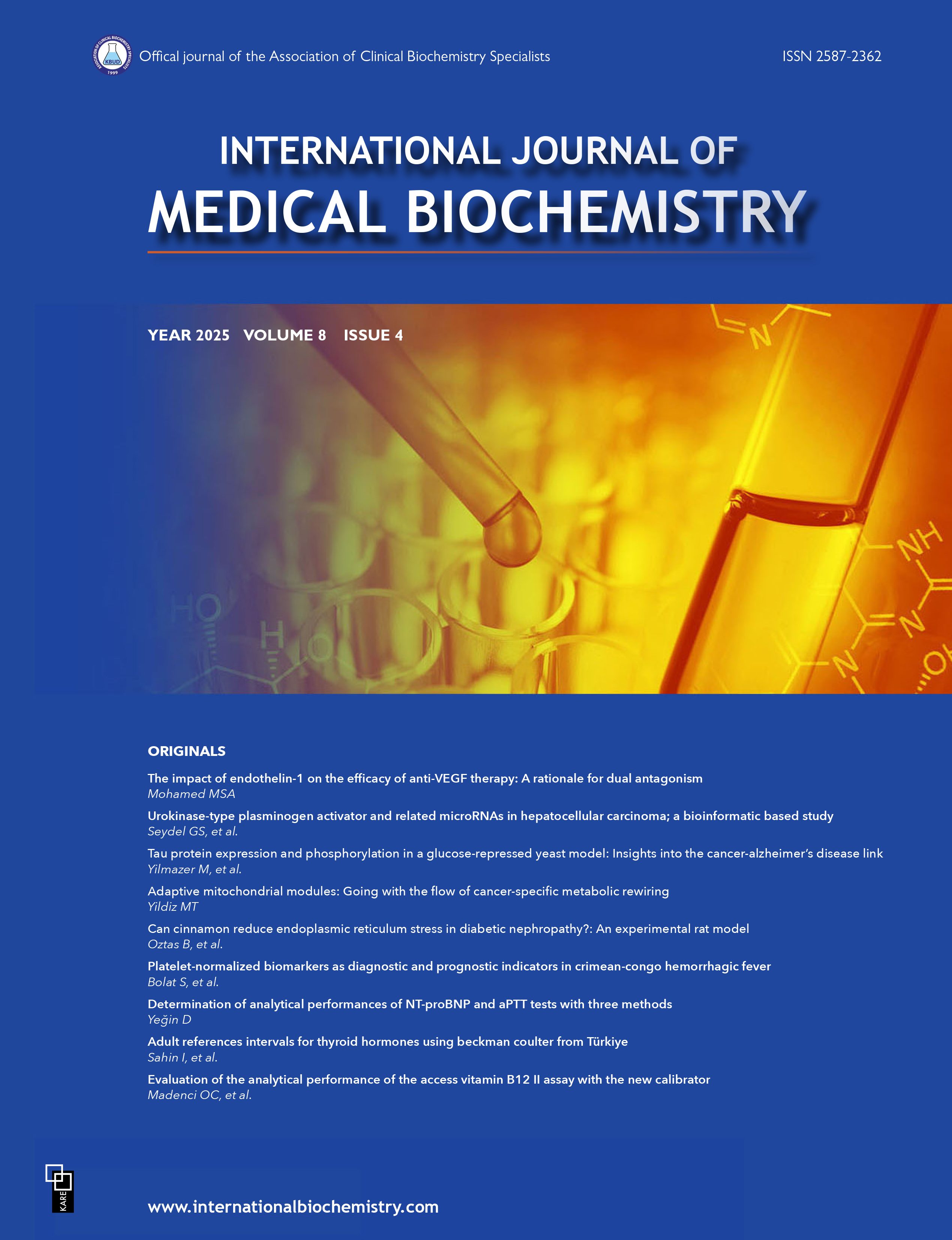The importance of measuring the uncertainty of second-generation total testosterone analysis
Sema Nur AyyildizDepartment Of Biochemistry, Ankara Training And Research Hospital, University Of Health Sciences, Ankara, TurkeyINTRODUCTION: Testosterone is present in both genders; however, the level is low in women, whereas it is high in men. A measurement of total testosterone (TT) is widely requested by clinicians in daily practice, and is used in both diagnosis and treatment. The aim of this study was to calculate the measurement uncertainty of TT and to make a contribution of new research to the literature.
METHODS: The identification of measurement, factors that can affect the measured value, laboratory reproducibility bias (uRw2), laboratory and method bias measurement uncertainty (Ubias), uncertainty of calibration (uCref), uncertainty of external quality control data (uEQA), combined measurement uncertainty (Uc), and extended measurement uncertainty (U) were evaluated and reported.
RESULTS: The results of determining the measurement uncertainty of TT measurement in this laboratory were as follows: 1) uRw2 = (RSDlevel 12 + RSDlevel 22 + RSDlevel 32) / n: (20.902 + 17.482 + 7.002) / 3 = 263.79; 2) uCref = 0.012; Cref = 2.35; k=2. RuCref = (100 x uCref) / (k x Cref): (100 x 0.012) / (2 x 2.35) = 0.255; RuCref2 = 0.065; 3) Ubias2 = RuCref2 + uEQA2: 0.065 + 105.60 = 105.67; 4) Uc=√ (uRw2 + ubias2): √ (263.79 + 105.67) = 19.22; 5) U = 2√ (uRw2 + ubias2): 2 x 19.22 = 38.44%; 6) Result report (serum TT): ± 38.44%.
DISCUSSION AND CONCLUSION: The measurement uncertainty result for TT calculated using the top-down method was ± 38.44% with a 95% confidence interval. The individual measurement uncertainty result for each test should be given to the clinician and the patient together with the test results. The TT measurement uncertainty of other methods should also be known at the international level.
Keywords: Second generation immunoassay, total testosterone, uncertainty of measurement
Manuscript Language: English







